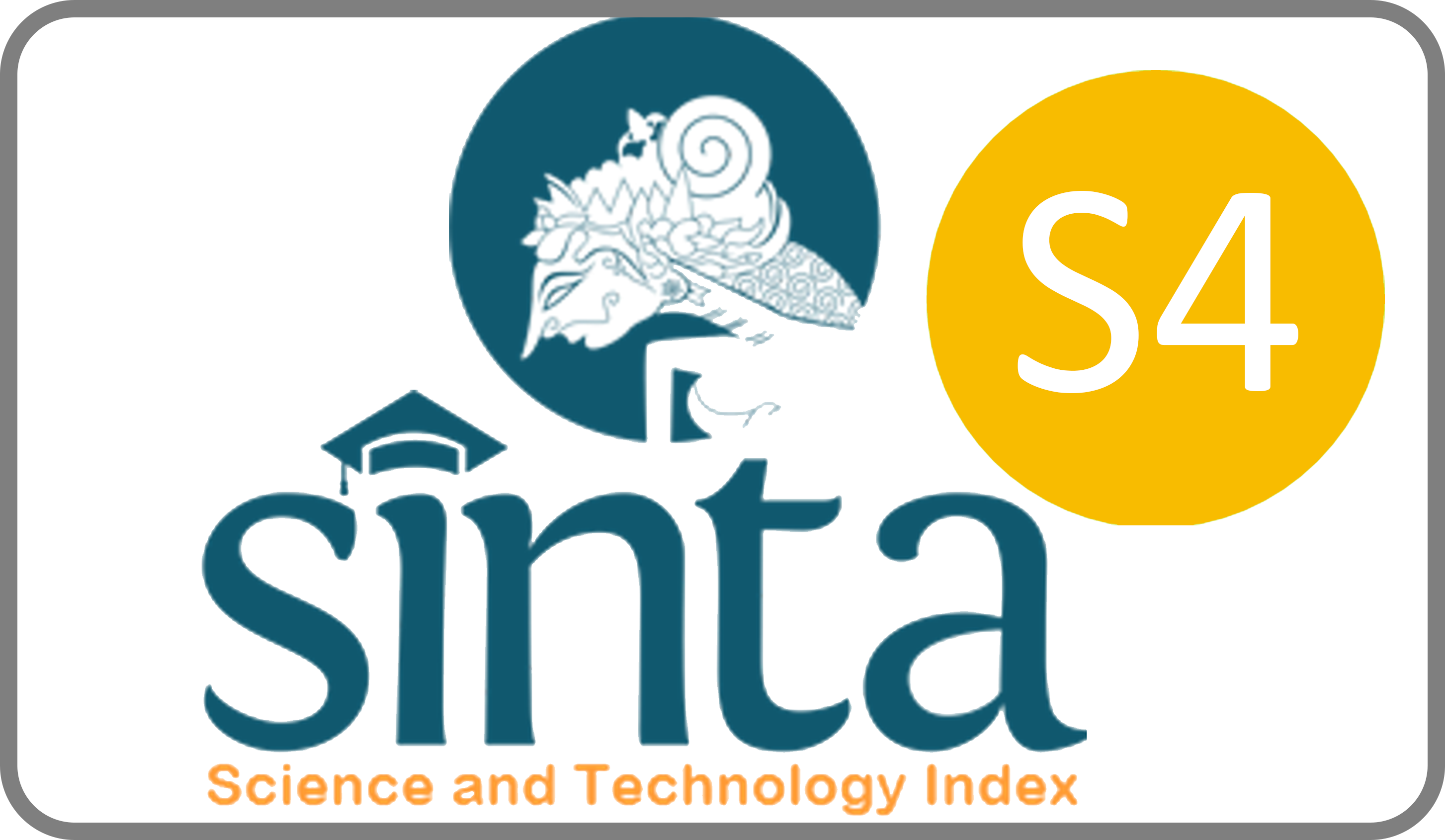COMMUNICATION SKILLS TRAINING FOR HEALTH WORKERS TO IMPROVE SERVICES OF PUBLIC HEALTH CENTER AT SIDOARJO
Downloads
The effective communication is crucial for providing good service at the Community Health Center (Puskesmas). One major issue that can lead to patient dissatisfaction is the communication skills of health workers. When these workers struggle to communicate well, patients may feel poorly served and find it hard to understand their health conditions and care instructions. To address this problem, the Communication Department of FISIP UNAIR organized a training called "Communication Skills Training for Health Workers to Improve Puskesmas Services at the Sidoarjo Regency." The aim of the training was to minimize communication errors between doctors and patients and enhance the community’s view of services at the Puskesmas. The training included various sessions for health workers. They had the chance to share their thoughts, understand patient backgrounds, and practice listening skills. They also learned how to use facial expressions, gestures, and polite language when communicating with patients through role-play exercises. The results of the training were positive. Participants could explain the material through role-play and improved their active listening skills. They managed their facial expressions, gestures, and voice tone better, and applied polite communication with patients from different backgrounds. A final survey showed a 25% increase in communication skills, improving from 55% to 80%. In summary, the community service team concluded that the training was well received and effectively implemented by participants at their health centers.
Abdulghafor, Rawad, Sherzod Turaev, and Mohammed A. H. Ali. 2022. “Body Language Analysis in Healthcare: An Overview.” Healthcare 10, no. 7: 1251. https://doi.org/https://doi.org/10.3390/healthcare10071251.
Arda, Darmi, and Suprapto Suprapto. 2023. “Therapeutic Communication Skills of Nursing Students in Clinical Practice.” Jurnal Ilmiah Kesehatan Sandi Husada 12, no. 2: 346–52. https://doi.org/https://doi.org/10.35816/jiskh.v12i2.1088.
Christina, Laura Victoria, and Astrid Pratidina Susilo. 2021. “Article Review: Penggunaan Metode SBAR Untuk Komunikasi Efektif Antara Tenaga Kesehatan Dalam Konteks Klinis.” KELUWIH: Jurnal Kesehatan Dan Kedokteran 3, no. 1: 57–63. https://doi.org/https://doi.org/10.24123/kesdok.v3i1.4584.
Dewi, Retasari. 2015. “Komunikasi Terapeutik Konsuler Laktasi Terhadap Klien Relaktasi.” Jurnal Kajian Komunikasi 3, no. 2: 192–211. https://doi.org/10.24198/jkk.v3i2.7408
Erliana, Marwa, Ahdan Ahdan, and Andi Muttaqin. 2020. “Etika Komunikasi Antara Perawat Dengan Pasien Dalam Membangun Komunikasi Efektif Untuk Kesehatan Pasien Di Puskesmas Bangkala Kabupaten Jeneponto.” Respon Jurnal Ilmiah Mahasiswa Ilmu Komunikasi 1, no. 1: 6–15. https://doi.org/10.33096/respon.v1i1.14.
Firnanda, F, S. C. Puspitasari, and M. Arwani. 2022. “Hubungan Komunikasi Yang Efektif Dengan Kepuasan Pasien Instalasi Jalan Di UPTD Puskesmas Pandaan.” Jurnal Kesehatan Hesti Wira Sakti 10, no. 2: 82–90. https://doi.org/10.47794/jkhws.v10i2.444.
Hamdana, and Irfanita Nurhidayah. 2022. “Meningkatkan Keterampilan Berkomunikasi Perawat Onkologi Dengan Communication Skill Training (CST).” Jurnal Keperawatan Terapan 08, no. 01: 45–50.
Juita, Erlinna. 2022. “Pelatihan Listening Skill Berbasis Daring Bagi Siswa SMA DI Kota Pekanbaru.” J-AbdiJurnal Pengabdian Kepada Masyarakat 1, no. 11: 3345–49. https://doi.org/https://doi.org/10.53625/jabdi.v1i12.2061.
Kewas, Grace Sinthike, and Rini Darmastuti. 2020. “Strategi Komunikasi Antarbudaya Dokter Kepada Pasien Dalam Proses Pelayanan Kesehatan Di RSU Raffa Majenang.” Jurnal SCRIPTURA Vol. 10, no. No. 2: 60–76. https://doi.org/10.9744/scriptura.10.2.60-76.
Kurniawati, Dewi. 2021. “Komunikasi Terapeutik Tenaga Kesehatan (NAKES) Terhadap Pasien Covid-19 Di Medan Dan Pekanbaru.” KOMUNIKOLOGI:Jurnal Pengembangan Ilmu Komunikasi Dan Sosial 5, no. 2: 179–89.
Meisyaroh, Meriem, Murtini, and Haslinda. 2023. “Kepuasan Pasien Pada Pelayanan Kesehatan Di Puskesmas.” Jurnal Ilmu Kesehatan Masyarakat (The Public Health Science Journal) 12, no. 3: 238–45. http://journals.stikim.ac.id/index.php/jikm.
Percunda, Alita Dewi, and Djazuly Chalidyanto. 2019. “The Correlation between Perceived Communication Quality and Customer Satisfaction at Bhayangkara Hospital Emergency Department, Indonesia.” Journal of Public Health in Africa 1, no. s1: 1170.
Pramana, and Chairunnisa Widya Priastuty. 2022. “Adaptasi Komunikasi Tenaga Kesehatan Dalam Pelayanan Kesehatan Dengan Persepsi Risiko Paparan COVID-19.” Jurnal IMPRESI 3, no. 2: 6–15. https://jurnal.uns.ac.id/impresi/index.
Rijal, Fadillah, H. Muhammad Siri Dangnga, Usman, and Niar Novitasari. 2019. “Pengaruh Etika Dan Kinerja Tenaga Kesehatan Terhadap Pemberian Pelayanan Kesehatan Pasien Di Puskesmas Madising Na Mario Kota Parepare.” Jurnal Ilmiah Manusia Dan Kesehatan 2, no. 1: 12–25. https://jurnal.umpar.ac.id/index.php/makeshttps://jurnal.umpar.ac.id/index.php/makes/article/download/119/111/.
Saptyasari, Andria. 2015. “Kompetensi Komunikasi Pekerja Sosial Peduli Autism Dalam Mengatasi Hambatan Ketika Melaksanakan Kegiatan Penyadaran Tentang Keberadaan Anak Autis Di Masyarakat.” In Komunikasi Dan Isu Publik, edited by Aswad Ishak, 95–106. Surabaya: Buku Litera Yogyakarta.
Tatiwakeng, Rezka V., Nelly Mayulu, and Dina Mariana Larira. 2021. “Hubungan Penggunaan Metode Komunikasi Efektif SBAR Dengan Pelaksanaan Timbang Terima (Handover) Systematic Review.” Jurnal Keperawatan 9, no. 2: 77–88. https://ejournal.unsrat.ac.id/index.php/jkp/article/download/36784/34205.
Copyright (c) 2025 Andria Saptyasari, Titik Puji Rahayu, Ratih Puspa, Santi Isnaeni, Suko Widodo, Dina Septiani, Rani Sukma Ayu Suteja, Mytha Eliva Veritasia, Intan Fitranisa, Yuyun W. I. Surya, Angga Prawadika Aji, Irfan Wahyudi, Rachmah Ida, Yayan Sakti Suryandaru, Liestianingsih D

This work is licensed under a Creative Commons Attribution-ShareAlike 4.0 International License.
JLM by Unair is licensed under a Creative Commons Attribution-ShareAlike 4.0 International License.
1. The journal allows the author to hold the copyright of the article without restrictions.
2. The journal allows the author(s) to retain publishing rights without restrictions
3. The legal formal aspect of journal publication accessibility refers to Creative Commons Attribution Share-Alike (CC BY-SA).
4. The Creative Commons Attribution Share-Alike (CC BY-SA) license allows re-distribution and re-use of a licensed work on the conditions that the creator is appropriately credited and that any derivative work is made available under "the same, similar or a compatible license”. Other than the conditions mentioned above, the editorial board is not responsible for copyright violation.


















